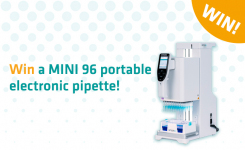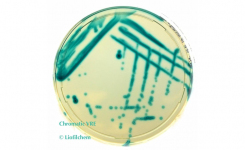Creative Diagnostics recently launched recombinant antigens p18 and p23 (viral capsid antigens, VCA), p54 and p138 (early antigens, EA) and EBNA1 (nuclear antigen, EBNA).
These recombinant antigens in immunoassays are suitable for the detection of IgG and IgM antibodies against EBV in blood samples. Epstein-Barr Virus (EBV) is one of the most prevalent human viruses, as it affects more than 90% of adults in the world.
Blood tests for EBV detect antibodies against EBV in the blood and help establish a diagnosis of EBV infection. Creative Diagnostics now offers several new products for EBV research uses, such as:
- Recombinant EBV p18 (DAGA-3074, the E.Coli derived recombinant mosaic protein contains the HHV-4 p18 regions, and 1-119 amino acids),
- Recombinant Epstein-Barr Virus p54 Early Antigen [His] (DAG-T2771, a DNA sequence encoding the Epstein-Barr virus p54 early antigen (a.a 257-404) was expressed with a polyhistidine tag at the N-terminusl), and EBV NA protein [His] (DAG1578,
- Recombinant EBV NA protein fused to His Tag at N-terminus was expressed in E. coli and purified by proprietary chromatographic technique).
Epstein-Barr virus, also known as human herpesvirus 4 (HHV4), belongs to Gammaherpesviridae, the genus Lymphovirus. EBV is spread through saliva, blood, and semen, and usually causes infectious mononucleosis (IM). Some cases also show that the virus links to several types of cancer and have a higher risk of certain autoimmune diseases. EBV has the ability to infect a very broad age group. In the United States, about half of five-year-olds and about 90 percent of adults have evidence of prior infection. The main cell types of EBV infection are epithelial cells and B cells.
Once the initial lytic infection of EBV is controlled, EBV latency persists in an individual’s B cells for the rest of the individual’s life.EBV-specific serological assays, such as ELISA, EIA, IFA, chemiluminescence, and immunoblot, are the easiest methods to test for EBV infection and to assess acute and distant infection in healthy individuals.
Among the proteins encoded in the EBV genome, several have been used to detect EBV antibodies, including EBNA1, EBNA2, VCAp23, VCAp18, early antigens.
Commercial immunoassays for the detection of IgG and IgM against EBV are required to detect at least three EBV antibodies: VCA-IgG, VCA-IgM, and EBNA-1 IgG, which are often combined to differentiate between acute and distant infections.
The presence of VCA IgM and VCA IgG without EBNA-1 IgG indicates current acute infection, whereas the presence of VCA IgG and EBNA1 IgG in the absence of VCA IgM usually indicates distant infection.
If you want to know more details about antigens for EBV antibody tests or have any other questions about our research materials, please visit Creative Diagnostics at www.creative-diagnostics.com.


















